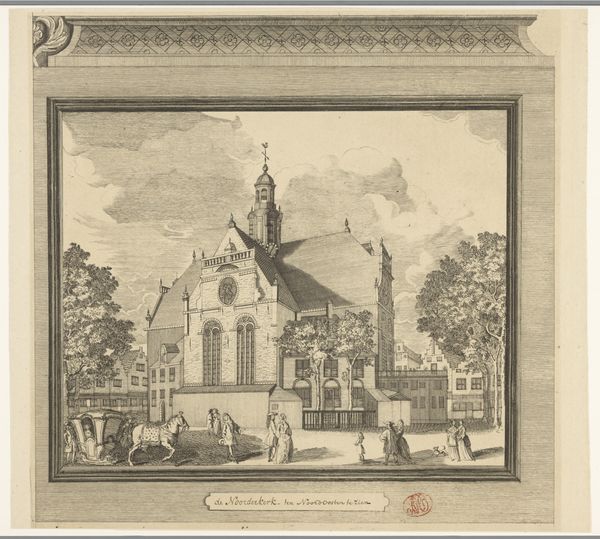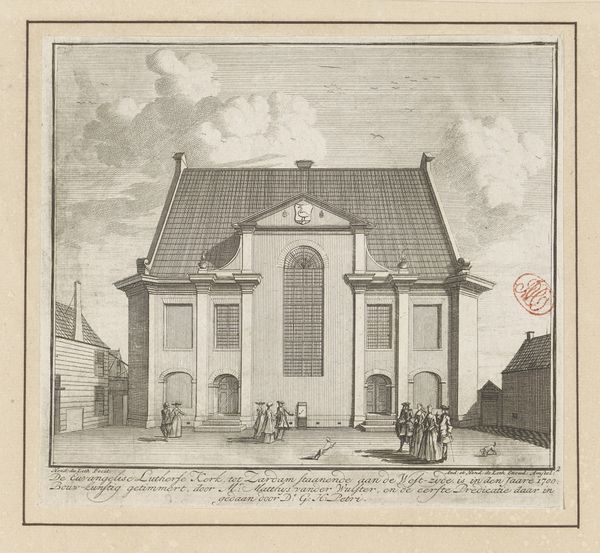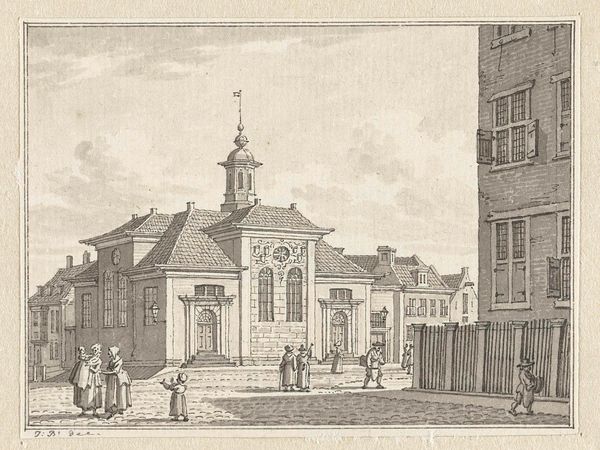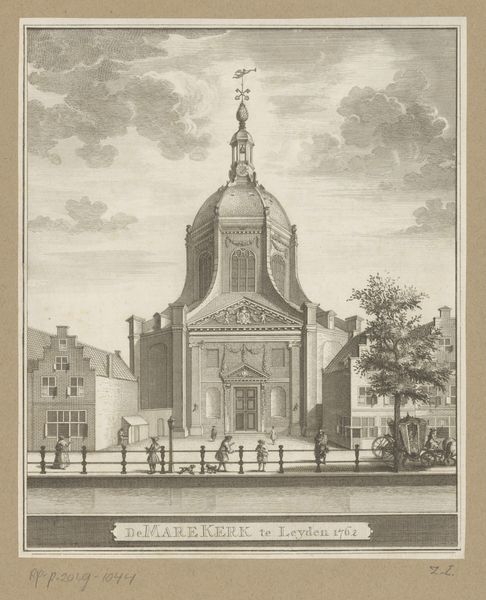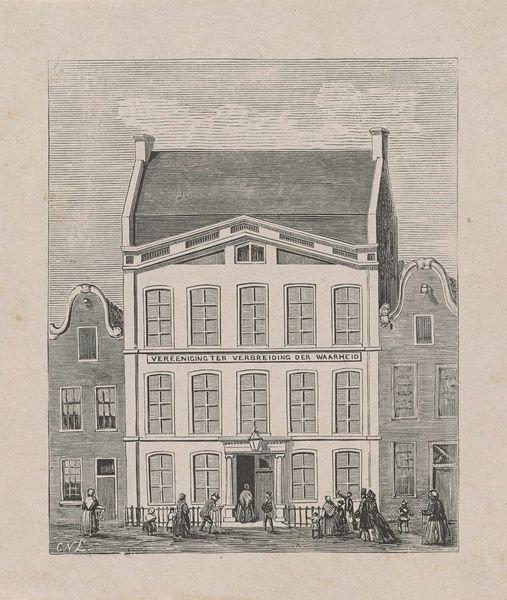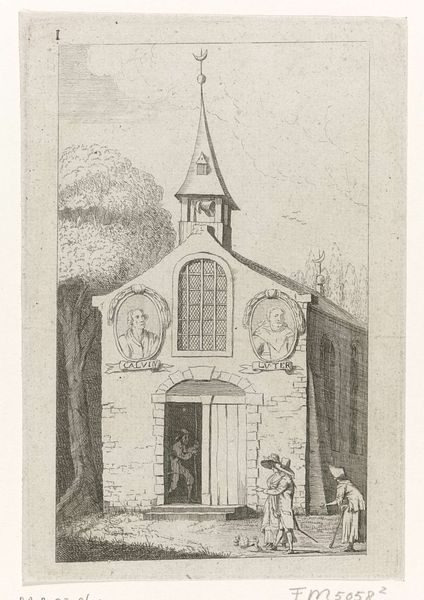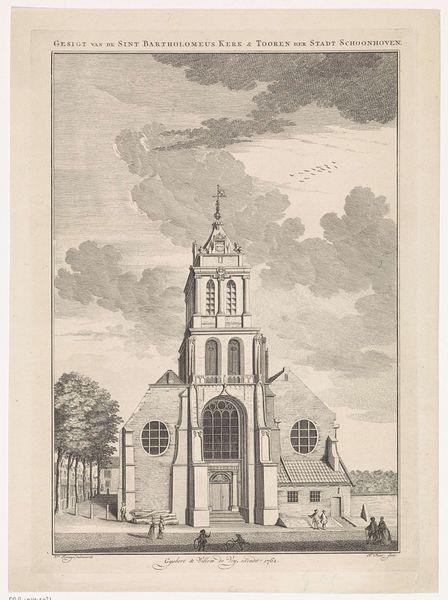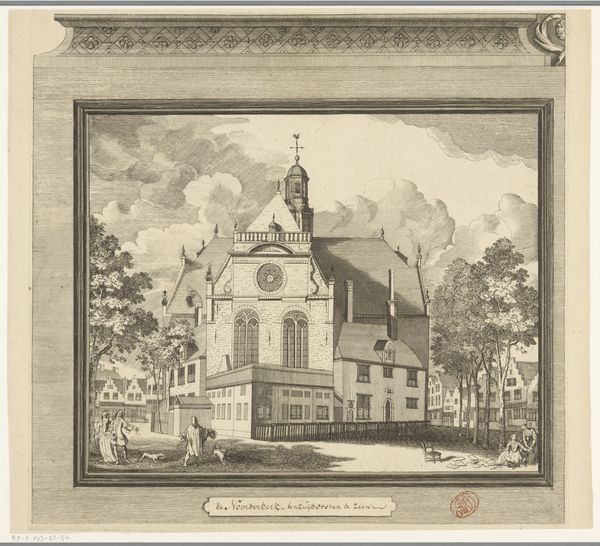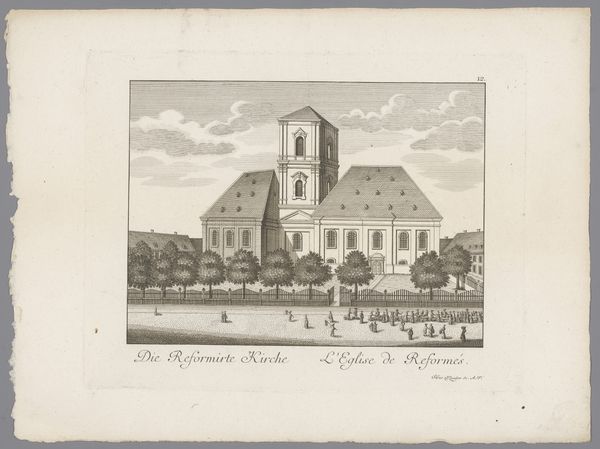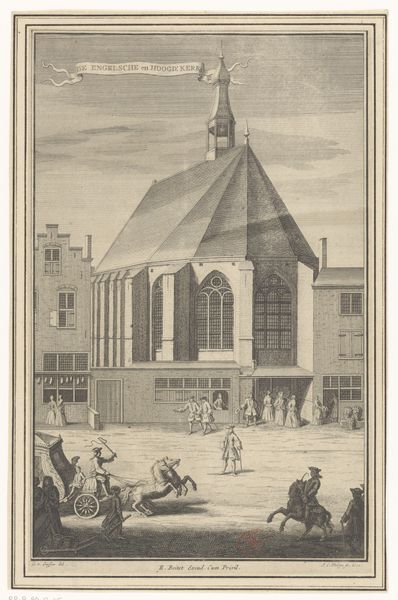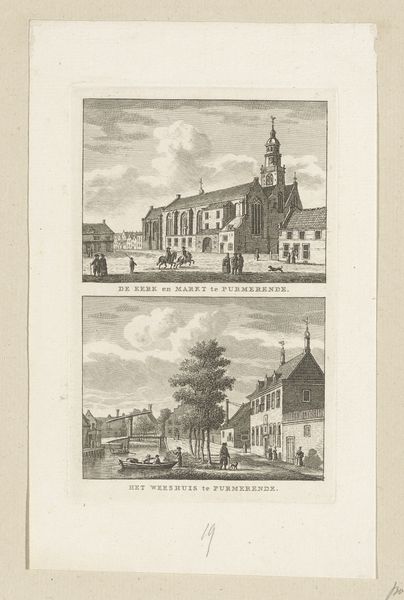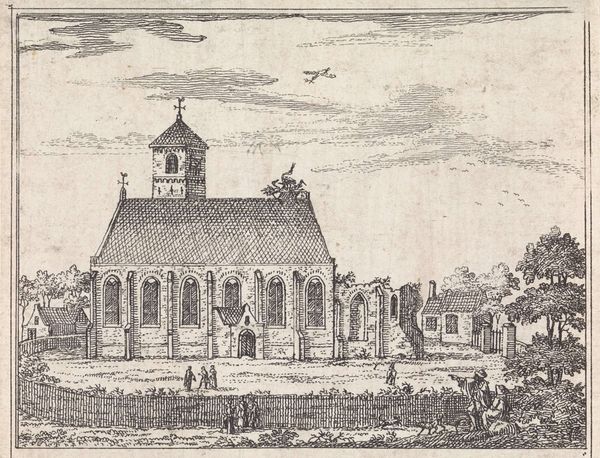
#
aged paper
#
toned paper
#
blue ink drawing
#
parchment
#
pencil sketch
#
old engraving style
#
sketch book
#
personal sketchbook
#
old-timey
#
19th century
Dimensions: height 266 mm, width 225 mm
Copyright: Rijks Museum: Open Domain
Editor: This drawing, “De Wittevrouwen- of Gelderse Poort te Utrecht,” by Hendrik Hoogers, was made in 1771 using blue ink and pencil on what looks like toned paper. I’m struck by the clarity of line and how meticulously he captured the architecture. What visual elements stand out to you the most? Curator: I am drawn to the interplay of geometric forms and the structural relationships evident in the artist’s depiction. Note how the cylindrical tower contrasts with the linear elements of the bridge, creating a dialogue between volume and plane. The surface treatment is key; observe the hatched lines – the marks themselves generate light and shadow and a tactile sensation, despite the flatness of the medium. Editor: It’s interesting how you focus on the basic forms. So, you are less concerned with the figures in the foreground? Curator: While the figures provide scale and a sense of life, their primary function, formally speaking, is to activate the space and lead the eye towards the central architectural form. Their presence reinforces the imposing structure of the gate itself, underlining the human relationship to built environments. Consider also how Hoogers uses line weight and density to delineate form and space. Notice, for instance, the sharper lines defining the gate compared to the softer rendering of the distant trees. Editor: So, by examining the lines and shapes, we can learn more about the intended effect. Curator: Precisely. This close attention to composition and form allows us a deeper understanding of the artist’s vision, revealing not just what is depicted but how it is presented, thereby unveiling the intrinsic aesthetic qualities of the work. Editor: This has given me a completely new way to appreciate this drawing. I was initially focused on the historical aspect, but I see the power of analyzing it from a purely formal perspective.
Comments
No comments
Be the first to comment and join the conversation on the ultimate creative platform.
